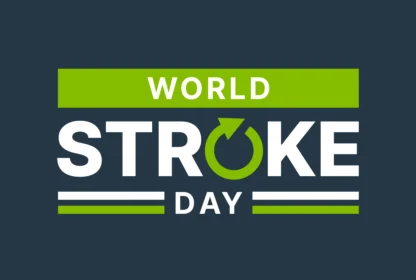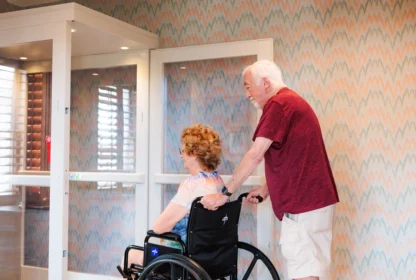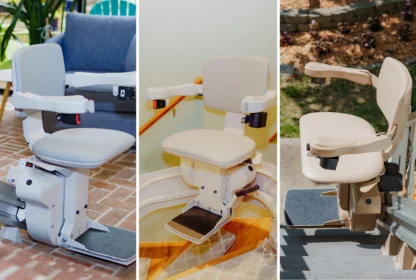
We were introduced to Buddy through a mutual friend, and after learning more about him, could not pass up the opportunity to share his story. Buddy Elias, or “Buddy 1 Leg,” is an adaptive athlete and mentor who has made it his personal mission to inspire others to never give up. We at 101 Mobility are always excited to meet such inspirational individuals, and we are honored to have the opportunity to introduce you to Buddy Elias!
Background
It all began in 2000 when, at the age of 29, Buddy had an allergic reaction to cigarettes. The reaction caused his blood vessels to swell, leading to tissue damage that resulted in the amputation of his leg below the knee. At that moment, everything changed as Elias was thrust into a whole new way of life.
When he came home from the hospital and began the healing process, he recalls when his five-year-old daughter asked him somberly, “Daddy, how are you going to run and play with me?” Elias hugged his daughter tight and told her, “don’t worry about daddy, he’s going to be just fine.” With the help of his faith, friends, and family, he began the journey to find his new “normal.”
Becoming “Buddy 1 Leg”
In 2008, Elias’s stump developed gangrene resulting in his second amputation, this time above the knee. Not long after his second amputation, Elias accompanied his nephew to the skate park. While sitting back watching his nephew skate, he looked at a small rail and thought “I can totally handle that.” He grabbed a skateboard and got down on his hands and leg and began to teach himself to skate. This was the tipping point that reignited Elias’s passions, realizing that with or without his leg, nothing could stop him.
When winter rolled around, it had been nearly a year since Elias had last gone snowboarding. Aware that he would be unable to use a standard snowboard, Elias looked into ways to modify his existing board. He worked with friends and family members and used materials from his local Home Depot to create a crutch that would attach to his snowboard.
Elias officially became an “Adaptive Athlete,” developed the handle “Buddy 1 Leg (or B1L)” and continued to follow his passions. Local news channels and organizations began contacting Elias, at which point he remembers “a whole lot changed.”
That same snowboard that he first modified was recently donated to the Smithsonian National Museum of American History, and will be on display in their adaptive sports exhibit, opening October 2016.
Further Complications
Due to circulatory issues related to his cigarette allergy, Elias has had three bypass surgeries since 2000.
In 2016, he had two additional amputations and is now a double above the knee amputee. Following the amputation of his second leg, he considered changing his moniker to more accurately represent his mobility, but decided that he would keep “Buddy 1 Leg.” “It took too much time and pain to become Buddy 1 Leg. I’m going to keep being the same B1L, no matter what” states Buddy.
Community Involvement
Elias cites a number of adaptive athletes as his inspiration that helped him get where he is today. Such athletes include Oscar Loreto Jr., Professional Adaptive Skateboarder, Jon Comer, the first Professional Skateboarder with a prosthetic limb, and Chris Gentry, Professional Adaptive Skateboarder. To honor his own mentors, he hopes to pay it forward and help disabled kids learn to skate and snowboard.
Elias is active in the community and works with various adaptive sports organizations, including Adaptive Action Sports where he has been a mentor and coach since 2006. He is also active with ASK (Adaptive Skate Kollective), a nonprofit organization that hosts clinics for individuals with disabilities. They also raise money to help get wheelchairs and prosthetics for kids and motivate kids and adults with disabilities.
Life Rolls On
As I spoke with Buddy, he was polishing the chrome on his wheelchair in preparation for an event that upcoming weekend hosted by Life Rolls On, a nonprofit that hosts events for persons with disabilities. He had the staples removed from his leg after his fourth amputation only two days prior, and doctors warned him about the dangers of scraping the leg tissue and causing further damage. His response was that he would take it easy and might just “firecracker” down some stairs (a trick where a skateboarder rides the skateboard down a staircase). Quotes Elias, “I can’t just be a stump on a log!”
Inspiration
Elias attributes his success to his Faith, Family, and Friends. His faith allows him to recognize that everything happens for a reason, while his family and friends provide him with the motivation to get out there and keep going, adding that “a failure is never an option.” He never looked at becoming “disabled” as a disability – he simply focuses on being the best father and athlete he can be. Elias states, “They can take my arms and legs, and I’ll have them duct tape me to a skateboard or snowboard and push me down a hill.” In the background, his wife adds “we’ll attach a stadium seat to it and do whatever we have to!”
In reference to how cigarette smoking resulted in the loss of his legs, Elias holds no resentment but instead states, “I owe cigarettes a gratitude for introducing me to this world.”
When asked what advice he would give to somebody who has recently become disabled, Elias provides the following:
Eliminate any negativity from your life… Don’t let anybody tell you “you can’t” or that “you’ll never be able to” – they don’t know you and your heart … I determined what mobility I would have, not anybody else. They told me I would never run again, but with my prosthetic, I was able to run faster than most guys I know. Keep positivity around you. Every obstacle is a barrier, but there are always ways to get past barriers. Take each barrier one at a time – once you get past the first, each one after that seems smaller and smaller until they are hardly even barriers anymore and you can just step right over them… If something bad happens to you, figure out what you need to do to keep being you and living. Simply existing isn’t living, and if I’m just existing, I’d rather be dead.


